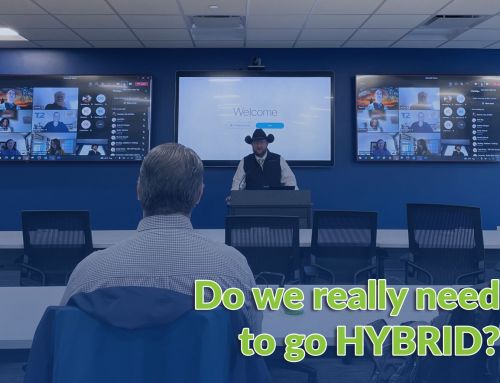In the last year, Meetings Northwest has worked with two dynamic entities to continue the success of their annual/biennial events. Our first, a support institution to Montana Manufacturers, Montana Manufacturing Extension Center – Compete Smart and our second, a significant company in outdoor products and conservation, Orvis – Orvis Guide Rendezvous and Down the Hatch Fly Fishing Festival. Obviously from different spectrums of business, but for us, they were somewhat similar in that both had been orchestrating their meetings in-house since the idea hatched decades ago. What this means is that their little larva has been a growing, innovative production for many years before we were handed the proverbial reigns to take it to flight.
Why we were hired
When an organization plans a recurring event for a many years, a few things can happen: 1) an event can start losing participation because it hasn’t adapted to its audience, 2) an important member of the planning team leaves with all the information, or 3) they strike the right balance of innovation and inspiration that they grow it out of their in-house capacity. Of course, you hope for the latter. But still, these situations all lead to “HELP”! That is where we come in. For these two groups, it was reasons two and three. Both events are well attended, anticipated and successful, but they needed outside help to continue that growth pattern, so we were hired.
Transition event
The first event after an event professional is hired, is what I like to call a “transition event.” This event is like doing a remodel to an existing space. The older the space is, the less you know what you are going to find once you break open the walls, so you should build in a higher percentage of contingency to budget unknowns like faulty electrical, asbestos insulation, or all the nastiness of water damage. A transition event is similar to a remodel in that there are many unknowns in an existing event that you cannot outline in your budget hence the need for a contingency fund. The longer the event has been taking place, the more complicated the event can be – coordinating with existing planning staff, gauging responsiveness from participants, loss of time with corporate staff changes, etc. Always include 10-15% contingency fund for unknowns in your budget, especially for an existing event.
Knowing the rules
The “transition event” for events like these acts as a transfer of reigns, building of trust, an introduction to current participants and important sponsors, and a learning of the current system. Everyone always says you must know the rules before you can break the rules. The first event is about “knowing the rules.” Our job is to make the event follow their mission and run seamless, while relieving pressure from the client. This first event may feel like a lot of unknowns to your client as well. They are used to taking care of everything (on their own schedule without necessarily billing it) and they have a high expectation that their investment in you has a good return. The client may expect you to do more when ideas crop up in office meetings or unintentionally cross your T’s for you when it would be more productive for them to focus on bringing in sponsors or taking care of other details. Creating a budget for a transition event is tricky. You can see inefficiencies, but you must learn why it is being done a certain way before you can initiate change (we often learn it is being done that way because it has always been done that way – and in all honesty, we all do this). Since you have not structured the original event, working through the process with the existing planners teaches both entities a great deal, but is never the most efficient process.
Learn from mistakes
These inefficiencies can cost you as an event planner. How to work with them gracefully is a difficult line. Mostly, you need to gauge the process. If you are asked to do something completely out of your contract, talk to your client about the added cost/value and adjust your fee accordingly. Your client won’t refer to your contract every time they ask you to do something, so if something pops-up that needs to be taken care of, yes, of course respond with a plan of attack, but also respond with an added-value fee.

Let’s Fly!
We are excited for our chance at the second event. We saw both our clients thrive at their events. They both attracted more participants, fueled more connections and everyone had a really good time. We also met a lot of great people and gained trust; participants know who we are and remember our faces at registration, they recognize our emails and voices on the phone. Now it is time to build on that success and take our clients to the next level!
About the author:
Kasey B. Wright is a small town, small business kind of girl with nature in her heart. She grew-up working long hours at her parents general store in amazing Joseph, Oregon – Google it, oh wait, here’s a link – visit! Really- Arts, Camping, Resort on Wallowa Lake, Mountains, 52 high lakes, Gorgeous! Enough with the free advertisement, but truly it is amazing – Google it! Now days, if not twiddling away on her iMac, painting, or mentally re-designing pretty much everything, she is outside with her family enjoying all of the adventures that lay beyond her front door (which in Missoula are abundant and basically start within a five-minute radius of her house). Her family, a husband of whom she met as a freshman in college (architect – I know two designers and yes, nothing ever gets done), our dog (neurotic first child wire-haired pointing griffon), cat (shelter cat – maybe the most adjusted member of our family), and twins (girl+boy) in chronological order, keep the adventure alive! Oh yah, fish too (rarely claimed).








